The benefits of nasal-only breathing
I’ve travelled the globe to gain health and fitness knowledge for years. Who would have thought one of the most impactful methods I learned so far was simply to keep my mouth shut and breathe exclusively through my nose?
I’ve always been a very conscious breather in the weight room. Bracing the core and breathing correctly is essential to keep the core stiff and low back protected during heavy lifts. It’s a skill I can do well and one that’s helped me build strength without getting injured for over a decade.
Cardio is different. I never gave much thought to how I was breathing. Like most people, I would mainly breathe through my mouth and I would breathe faster and harder as the intensity of exercise increased. I assumed this was normal and the right thing to do. After all, you can inhale more air through the mouth and therefore more oxygen into the body, right!?
I was wrong. Very wrong.
Credit where credit is due – my introduction to breath work came via an online course called ‘The Art of Breath’. It was great. No dogma or biases. Just solid principles based on the mechanics and physiology of breathing. Intrigued by the science, I then read ‘The Oxygen Advantage’ by Patrick McKeown. It was completely attuned and equally mind-blowing.
After learning that my assumptions were wrong and gaining knowledge I wish I‘d known sooner, I started to implement the simplest, most powerful method: nasal-only breathing.
I’ll get to my experience in a moment, but first, let’s explore the WHY.
Why you should be breathing through the nose instead of mouth
It would be logical to assume that breathing through the mouth gets more oxygen into the body. While it’s true you can inhale more air breathing this way, it actually results in less oxygen being delivered to your working muscles.
I know that sounds counter-intuitive. I thought the same. Here’s why:
When you exercise, carbon dioxide builds up in the blood – this is what stimulates breathing. As you breathe, this byproduct of muscular activity is carried out the body through expired air.
Breathing faster and more heavily enables you to offload carbon dioxide more quickly.
Here’s the catch…
If carbon dioxide is offloaded too quickly (as is the case with mouth breathing), oxygen uptake at the working muscles is lowered.
This is because there is an inverse relationship between carbon dioxide and oxygen (The Bohr Effect for the nerds out there).
There needs to be a relatively high concentration of carbon dioxide present in the blood for oxygen to be efficiently released to the working muscles. If carbon dioxide concentrations are low, then much of that fresh oxygen is not utilized – it’s carried straight out of the body instead.
So the goal is to breathe in a way that offloads carbon dioxide more slowly and steadily, by managing airflow. The best way to do that – nasal-only breathing.
By breathing in and out LESS air, your muscles receive MORE oxygen. Oxygen is the fuel source of aerobic metabolism and energy production, so this heavily impacts endurance performance.
Now is the perfect time to get back to my experience with this method. It’s not as simple as “just keep your mouth shut”.
My experience with nasal-only breathing during cardio
I started practicing this method with low-moderate intensity cardio. The two methods I personally use on a regular basis are steady state cardio and Anti-HIIT. Both involve maintaining a steady pace and intensity for 30-45 minutes, with an average heart rate around 70% of my maximum (140bpm in my case).
Wow, did it SUCK.
During the first few sessions, I had to do short intervals of nasal-only breathing interspersed with mouth breathing. I can only describe the sensation as similar to holding your breath underwater. A strong urge to breathe more heavily builds up until you have to open your mouth and gasp for air.
I quickly learned that this was a normal reaction. It’s NOT because I was starving my body of oxygen, it’s simply because I had a very low tolerance to carbon dioxide building up in the body.
So in the first few sessions, I had to mix breathing through the nose and breathing through the mouth. I also had to work at a slightly lower intensity than usual, otherwise it became very difficult to maintain breathing this way for longer than a few minutes at a time.
Session by session, my tolerance improved until I could sustain nasal-only breathing for an entire workout. Then, I could push the intensity and handle higher heart rate averages (I can now maintain nasal-only breathing at 150bpm for an hour).
I’m still fairly new to this method, but in the short time I’ve been exclusively breathing through my nose during cardio, my performance has shot up. Notable improvements include:
>> Feeling significantly less dehydrated. Not requiring as much fluids.
>> Less sweating.
>> Better endurance.
>> Higher average power output at a given heart rate zone.
>> Faster recovery post-workout.
These benefits came about incredibly quickly. To put it into perspective, it would probably take a year for me to put 5kg on my bench press. These cardio benefits were noticeable within a few short months.
Here’s a workout I did just yesterday. Notice the key stats:
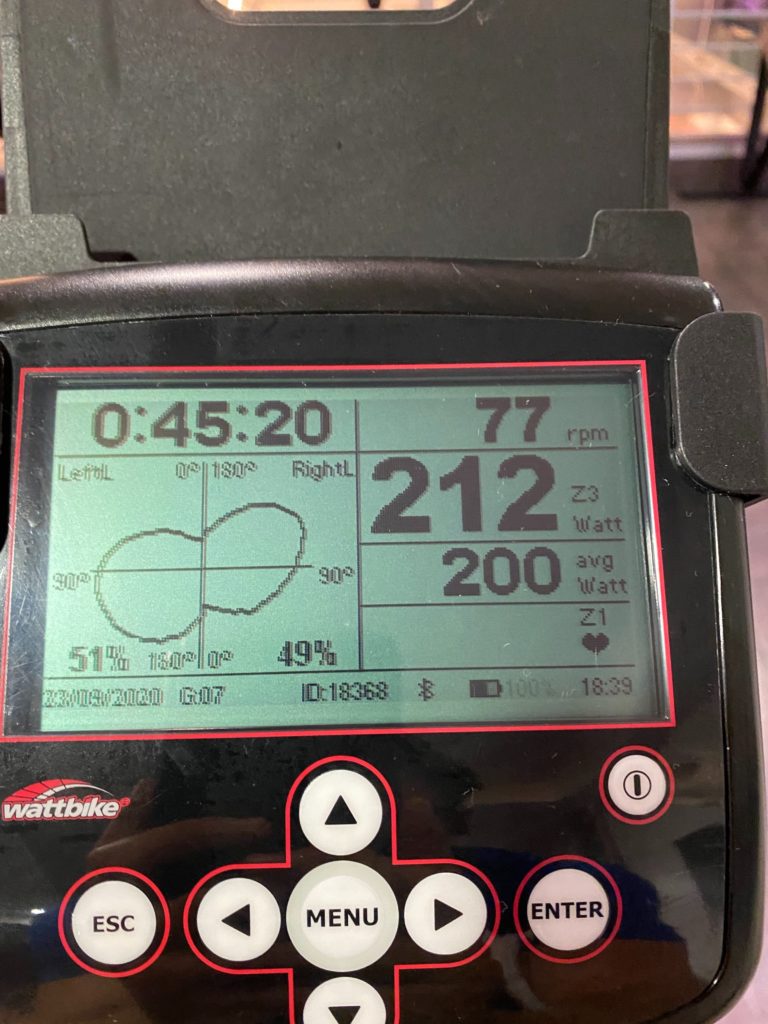
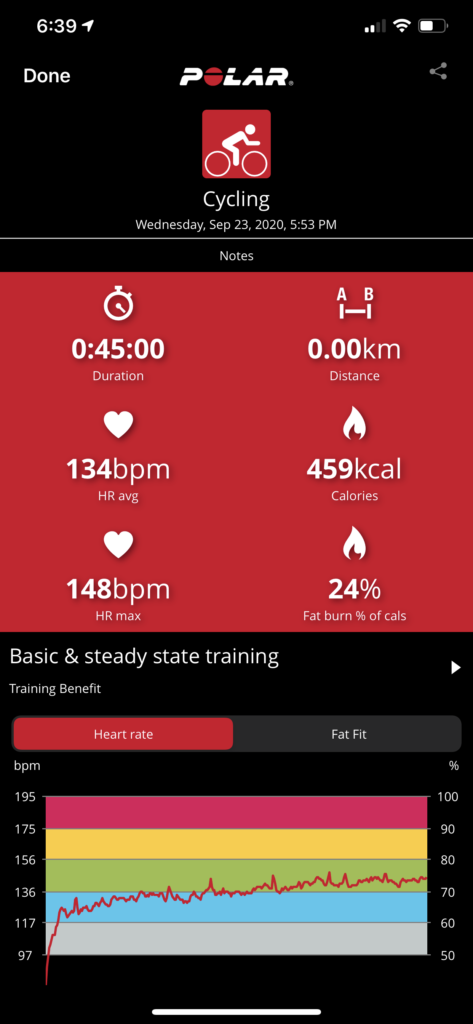
Time: 45 minutes.
Average Power Output: 200 Watts.
Average Heart Rate: 134bpm.
A past workout of this length and power output would have had my heart rate average 10-15 beats higher.
So, where should you begin?
If you’re as intrigued as I was about nasal-only breathing, I urge you to start by practicing breathing this way:
Start with low intensity cardio. Try breathing through the nose exclusively and only open the mouth when you feel a strong need to do so. Little by little, your tolerance will improve and it will become more comfortable to breathe this way.
Expect an initial drop in performance. This is normal. When your body adapts to this more efficient breathing strategy, you’ll take your cardio health and performance to the next level!
What about HIIT?
You might be thinking, what about HIIT training and other forms of higher intensity cardio workouts? I’m on the fence about this. One thing I know from plenty of reading on the subject is that we can train ourselves to handle very high intensities breathing entirely through the nose. But it takes patience and a lot of practice. I’ll experiment and report back with my findings! Let me know how you get on too in the comments below.
Footnote
Nasal-only breathing isn’t just a game-changer for cardio performance, but for your overall health and wellness too. Here are three excellent resources on the subject if you would like to dive deeper:
‘The Oxygen Advantage’ by Patrick Mckeown.
Breathe by James Nester
Art of Breath by Brian Mckenzie

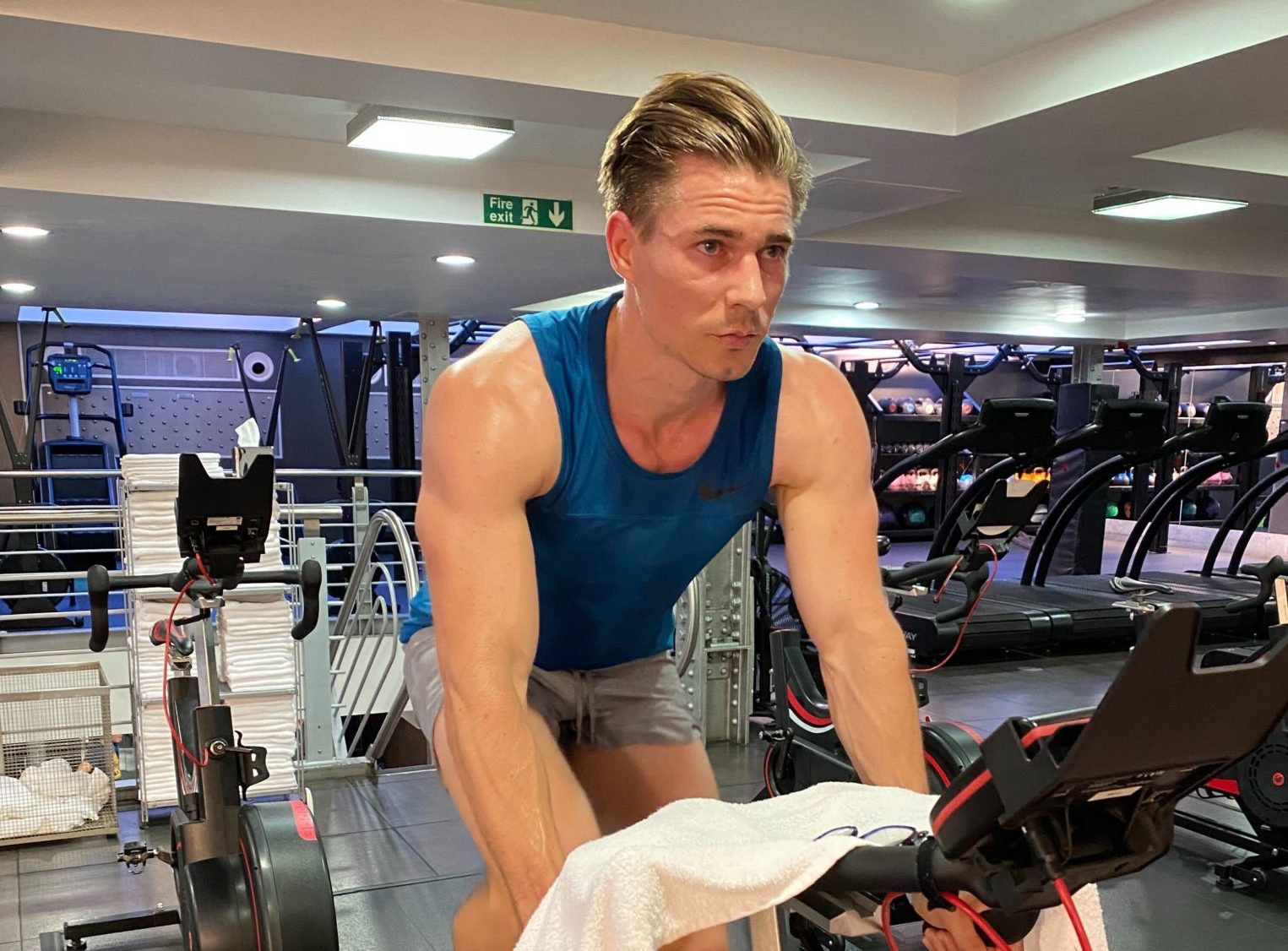
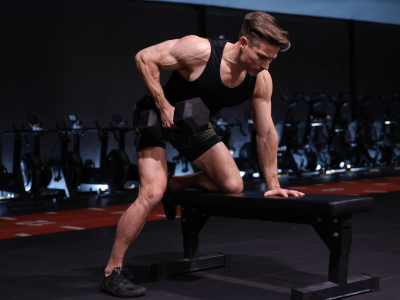
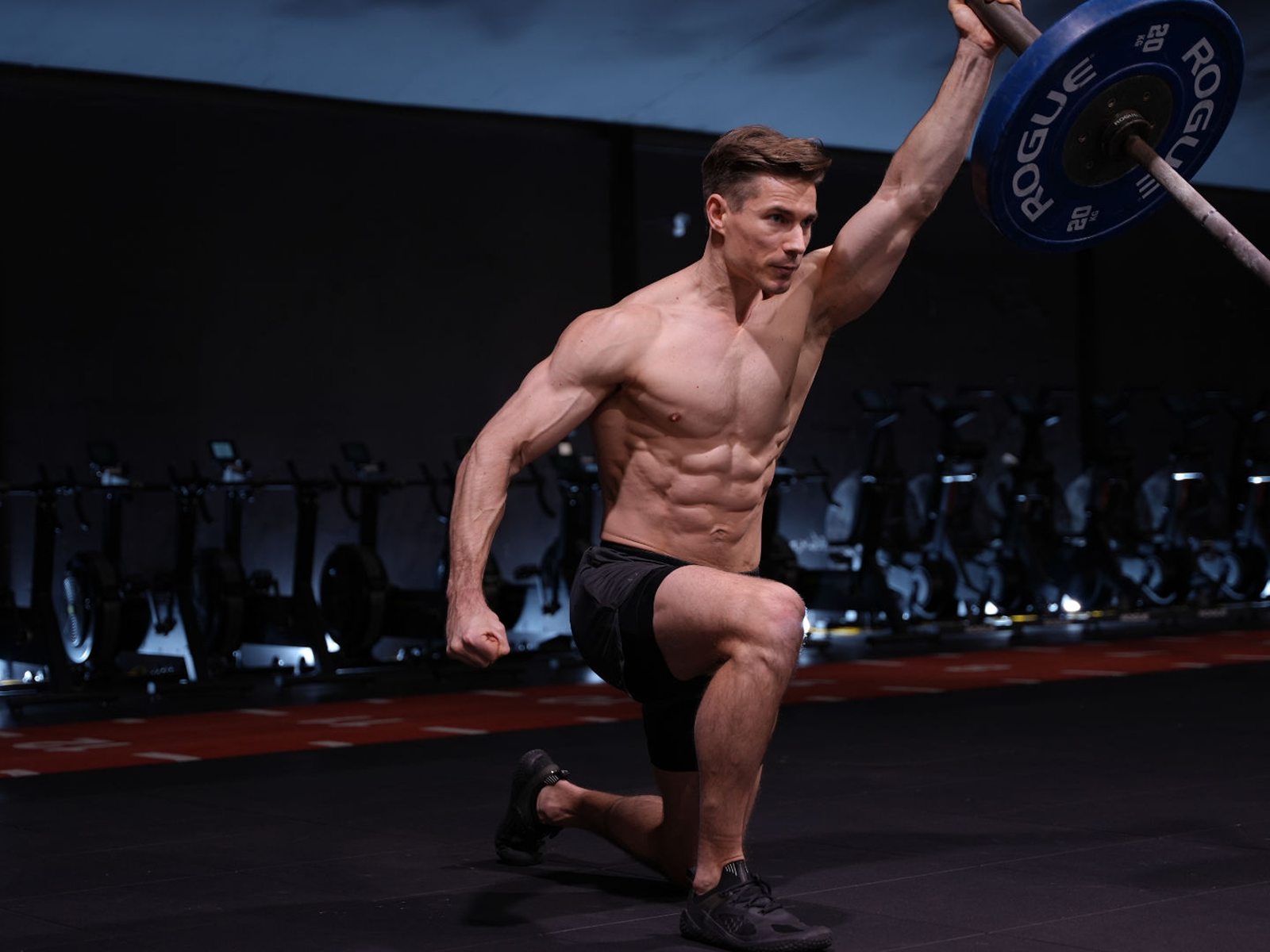
Nasal Breathing does work pretty well! Ofc it’s precisely the feeling of halting your breath initially but then as you build up the habit, it gets so much better. Glad I crashed upon Jack’s IG Story some months ago😄
Well described! Thanks so much, happy the content is valuable.
Back in the gym after a self imposed 10 month lay-off to focus on pain management and then of course lockdown.
On the first week of your re-build program and as always follow all your posts and noticed you pushing the nasal breathing. I did it for Wednesday’s watt bike 30min session and it was exactly as you said, at some points the mouth opened without intention.
Now you’ve said it but I never give it a thought; I sweated so much less. Considering next to no Cardio in 12 months+ (apart from long walks) I sweated far less then when I was “fit” doing two cardios a week. Cant track HR ATM but I was around 7/10 RPE for sure.
Sterling job in description mate, keep it up!!
Regards and stay safe,
Giuseppe
Amazing right!? The sweating was a huge one for me as the body is working so much more efficiently. Thanks for the positive feedback and I hope you enjoy the program!
Hello Jack, great article! I recently finished listening to James Nester speak on Joe Rogans podcast which sparked my interest in different breathing techniques, and wanted to ask a quick question. During weight lifting would you recommend nasal only breathing as well? Looking forward to your response, have a great one!
Excellent question. I will do a video on this topic as it’s quite a nuanced technique for lifting, nasal in, mouth out (but through pursed lips). As for the recovery between sets…100% nasal only will get you better recovered for subsequent sets.
Hello Jack,
Interesting article and also the one about anti-HIIT (LIIT) as well. There are some articles that look at the effect of nasal breathing increasing NO (nitric oxide) which I’m sure from the references you’ve read probably explain it as well. This leads to the increased CO2 which then of course allows for more Oxygen to be released to where they’re needed as you explain. But I wonder if the increased vasodilation from NO could also explain some of the other benefits like sweating less and better recovery, as heat would be released easier and there’s more blood flow. Also some surprising info regarding nitrogen compounds is that bacteria in the mouth and airways can recycle nitrate to nitrite which leads to more NO in the body. Basically using mouthwash or brushing your teeth after a workout or even before, could be hurting your gains or more likely recovery. Of course these are early studies with a small sample size
https://www.sciencealert.com/a-strange-thing-happens-if-you-use-mouthwash-after-you-exercise
https://www.washingtonpost.com/lifestyle/wellness/when-it-comes-to-breathing-during-exercise-youre-probably-doing-it-wrong/2019/01/23/b4d3c338-1e59-11e9-8b59-0a28f2191131_story.html